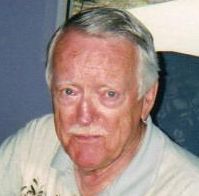
Publisher:
Bonnie King
CONTACT:
Newsroom@Salem-news.com
Advertising:
Adsales@Salem-news.com

~Truth~
~Justice~
~Peace~
TJP
Oct-05-2012 12:02

 TweetFollow @OregonNews
TweetFollow @OregonNews
A Bi-polar History of Canada
Bill Annett Salem-News.comThe 17th Century:
C'est La Guerre (Pretty much)
The 17th Century belongs to Canada.
- Samuel de Champlain
 Courtesy: thenpmom.wordpress.com |
(DAYTONA BEACH, FL) - Samuel de Champlain is considered the main figure in 17th Century Canada, although the English textbooks don't seem to think he was all that great. Actually, he's an unlikely choice as poster boy, because most of that Century was about wars (French-English, French Scottish, and even on one occasion, French-French), and the famous Frenchman was more a lover than a fighter. His great love was exploring – first the soft shoulder of the northeastern coast – and later, he discovered Lake Champlain, from which he got his name.
To start the Century, in 1600, two Frenchmen, Francois Grave du Pont and Pierre de Chauvin de Tonnetuit, started a trading post at Tadoussac. Unlike most of the successful DuPonts, at least in the financial industry in North America, Francois really didn't get much trading done. They started with 16 men, and during the first winter, 11 died, and the remaining five went back to France. In his report to the family, Francois reputedly stated: “C'etait trop froid, ca.” Tonnetuit, who was a captain in the French navy, not knowing anything about business, could only shrug.
In 1605 Samuel de Champlain, taking a break from exploration, established the settlement of Port Royal. We're talking Nova Scotia, but it hadn't even been named that yet. When it was, the name probably was supplied by the Scottish settlers, because Nova Scotia means “New Scotland” in Latin. The Latin came from the Jesuit priests who usually talked Latin – something like the way doctors and pharmacists do Latin today so the patient doesn't know what's going on.
Three years later, Champlain even discovered Quebec City - for the third time. Cartier had been there 74 years earlier when it was called Stadacona by the Indians. The Indians had been there even longer, but they don't count because they couldn't speak French.
In the course of his travels Champlain helped the Hurons to fight the Iroquois. As a result, predictably, the Iroquois didn't have much use for him. Or any of the French, for that matter. It served him right when they later lined up with the English from Toronto, when nobody else would.
In 1621, the Scots became colonists when James VI of Scotland granted Sir William Alexander a charter to form a Scottish colony – in Nova Scotia, of course. The colony only lasted until 1629, and that was about it for the Scots in Canada, except for curling, golf and the establishing of scotch and soda as the drink of choice at cocktail parties in Upper Canada. (By the way, Upper Canada is lower on the map, but higher in prestige than the French, especially in North Toronto. Lower Canada is like Montreal, which is higher on the map but in those days had an image problem, perhaps because of all the Indians camped below St. Catherines Street.) Scotch and soda continues as a favorite for some reason in Toronto, to this very day.
The Selkirk Settlers in Manitoba 200 years later were something else and are a totally different story. But in fact, in 1631, Charles I of England with the Treaty of Suza even gave Nova Scotia to the French. Nobody knows why. (They later migrated to N'Orleans and became Cajuns.)
After Champlain died in 1635, probably of over-work, trying to run New France and incessant exploration as far west as Lake Simcoe, the Catholic Church and the Jesuit establishment became the most dominant force in New France. Some historians believe they still are, but most hockey fans since Boom-boom Geoffrion (and the NHL) do not agree. The Jesuits excelled by discovering Montreal for the third time, this time calling it Ville Marie, a title that remains today, immortalized by the Sheraton Hotel chain and Canada Poste. (a.k.a. Her Majesty's Mail.)
By 1666, the population had swelled to 2,034 men and 1,181 women, not counting the Indians, of course. Some of the women, because of the shortage, were pressed into service as filles de joie. This was before Louis Quatorze sent out a couple of boatloads of real courtesans from the streets of Paris to become wives to the jeans of New France.
The English weren't that great at re-discovering towns and cities, as the French were. But the next Good Thing that happened in the 17th Century after all the wars, was the establishment of the Hudson's Bay Company. In 1670, Charles II of England (called the “merry monarch” because he knew how to throw a great party) granted a charter to some of his friends around the court to pretty well own most of North America.
“The Governor and Company of Adventurers Trading Into Hudson's Bay,” sounds harmless enough, but actually the charter gave this group of toffs all the land draining into Hudson's Bay. (Henry Hudson was an Englishman, so why not?) That land extended approximately from the Great Divide around Banff and Jasper in the West to the Laurentien Autoroute in the east. (Saskatchewan later opted out when they elected Tommy Douglas as the first socialist premier in Canada.) The Hudson's Bay Company was to live on in Hudson's Bay Oil and Gas, Hudson Bay Mining, Hudson's Bay blankets, and of course a chain of department stores, later known more fashionably as “The Bay.”
The original Company of Adventurers contented themselves with selling flintlocks to Indians in exchange for beaver pelts. I leave it to you to decide who was outsmarting whom. Personally, I'd rather have a flintlock. The Indians thought so too. Flintlocks came in handy for the natives at some Hudson's Bay posts, such as the one that figured prominently in the Frog Lake Massacre, where – at flintlock-point – the Indians got to take back all the beaver pelts anyway.*
While the English were pretty well seizing all of Canada, the French contented themselves, through their next famous explorer, La Salle, with exploring things like the Mississippi River (about 1682) all the way down to New Orleans. Apart from introducing cajun music to Bourbon Street, it was pretty much a lost cause for the explorers, because the Americans bought the whole thing from the French in the Louisiana Purchase. But at least LaSalle had an automobile named after him, and that's more than you can say for any Englishman, except perhaps for Sam McLaughlin, who sold McLaughlin Buicks in Peterboro later on.
That about does it for the 17th Century, except for four wars, King William's War (1689), the Battle of Port Royal (1690), a naval battle in the Bay of Fundy (1696) and the Raid on Chignecto in the same year. England and France ended all the fighting with the Treaty of Ryswick in 1697, and they both declared that there wouldn't be any more English-French wars in Canada.
What a laugh that was – as we were to see in the three hundred years of brawling ever since - right up to the Zombie controversy during World War II.
_______________________
* When Indians are killed, it's called colonization. When our chaps are killed, either with Hudson's Bay flintlocks or bows and arrows, it's called a massacre.
____________________
Questions for Study and Consideration:
1. What is the official drink of Nova Scotia?
2. The civil war in Acadia was:
(a) French against French;
(b) Scots against Scots;
(c) Scotch against bourbon;
(d) North against South.
3. Where did the Battle of Hudson's Bay take place?
4. Before the Battle of Quebec, Governor Frontenac said “The only response I have for your general is through the muzzles of my cannon.” In reply, the British envoy said:
(a) “nuts;”
(b) “up your muzzle;”
(c) “chacun a son gout;”
(d) “you and whose army?”
5. Placentia was the French capital of Newfoundland.
True (_)
False (_)
Why? (_)
6. Who discovered Lake Champlain? Be brief.
7. Who is called “the father of Newfoundland,” d'Iberville or Joey Smallwood?
8. When did General Motors last produce the LaSalle?
9. Who were the Jesuits? Why?
10. Who did the French fight in the French-Scottish War?

Bill Annett grew up a writing brat; his father, Ross Annett, at a time when Scott Fitzgerald and P.G. Wodehouse were regular contributors, wrote the longest series of short stories in the Saturday Evening Post's history, with the sole exception of the unsinkable Tugboat Annie.
At 18, Bill's first short story was included in the anthology “Canadian Short Stories.” Alarmed, his father enrolled Bill in law school in Manitoba to ensure his going straight. For a time, it worked, although Bill did an arabesque into an English major, followed, logically, by corporation finance, investment banking and business administration at NYU and the Wharton School. He added G.I. education in the Army's CID at Fort Dix, New Jersey during the Korean altercation.
He also contributed to The American Banker and Venture in New York, INC. in Boston, the International Mining Journal in London, Hong Kong Business, Financial Times and Financial Post in Toronto.
Bill has written six books, including a page-turner on mutual funds, a send-up on the securities industry, three corporate histories and a novel, the latter no doubt inspired by his current occupation in Daytona Beach as a law-abiding beach comber.
You can write to Bill Annett at this address: bilko23@gmail.com
 |
 |
 |
 |
 |
 |
 |
Articles for October 4, 2012 | Articles for October 5, 2012 | Articles for October 6, 2012

Quick Links
DINING
Willamette UniversityGoudy Commons Cafe
Dine on the Queen
Willamette Queen Sternwheeler
MUST SEE SALEM
Oregon Capitol ToursCapitol History Gateway
Willamette River Ride
Willamette Queen Sternwheeler
Historic Home Tours:
Deepwood Museum
The Bush House
Gaiety Hollow Garden
AUCTIONS - APPRAISALS
Auction Masters & AppraisalsCONSTRUCTION SERVICES
Roofing and ContractingSheridan, Ore.
ONLINE SHOPPING
Special Occasion DressesAdvertise with Salem-News
Contact:AdSales@Salem-News.com

Salem-News.com:
googlec507860f6901db00.html

Terms of Service | Privacy Policy
All comments and messages are approved by people and self promotional links or unacceptable comments are denied.
Remedy for diagnosis October 6, 2012 12:29 am (Pacific time)
Is Canada taking meds for this? It seems pretty serious, maybe they should consider the herbal remedy of their forefathers, Cannabis. It would probably help level out these monumental moodswings, but they need to begin medicating immediately and make up for lost time. Seriously, this behavior is unacceptable. Time for corrective measures.
[Return to Top]©2025 Salem-News.com. All opinions expressed in this article are those of the author and do not necessarily reflect those of Salem-News.com.